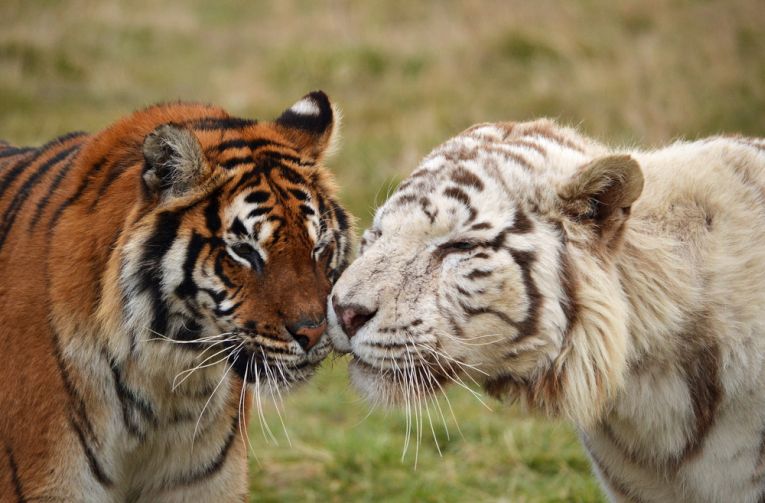The argument goes that we must have zoos/ wildlife conservation parks in order to preserve the integrity of genomes and species that are threatened in the wild. Large animals certainly have no alternative in many cases, while the smallest can also gain - in terms of relief from disease and simply the ease of counting any that remain alive!
So what is the difference between wild-bred and captive-bred populations? Mating patterns are certain to be different because of the enormous gap between the environments. The animal's appearance (phenotypes) will change in response to these factors and this again will compromise their chances of successfully re-adapting to the wild. Genetically, too, while the mate is selected without the usually complex processes of the wild fighting and courtship processes, there will be no approximation to natural selection.
The mate preference in captivity may in fact be one of the killers
as far as the genetic argument goes. Using 20 wild founders from a wide area, Mus musculus, the house mouse was captive bred for 3 generations. This should allow us to investigatere-wilding
within a semi-natural enclosure with wild mice .
For 20 weeks, the experiment carried on with 108 heavier, genetically different captive mice and a totally wild stock mixing together. The genetic difference involved lower allelic diversity (a slight inbreeding trend) and higher heterozygosity. 59 litters of 189 young were produced. 83% of these pairings were from parents with the same background (ie. wild/wild or captive/captive), although captive-bred females produced more litters. The reproductive success of the wild and captive-bred mice was, however, similar.
The diet in captivity could have somehow influenced mate choice. The genetic outbreeding created by captive breeding could have improved the genetic quality and/or compatibility. The daily activity and microhabitat use could also have affected the animals in such a way that mate choice was limited for mixed-marriages
. If you can think of other explanations, then carry on, but these fairly narrow ranges of argument present a very useful set of programme ideas for those releasing any species back into the wild. With mice plentiful and greatly-studied, back-----–up for any factual discussion would be readily available.
Brendan Slade of the University of Melbourne and 6 fellow researchers would agree that Assortative mating among animals of captive and wild origin following experimental conservation releases represents a useful and very novel step forward in the necessary understanding of phenotype and genotype change. They publish their paper in the Biology Letters of the Royal Society this week.
The major problem resulting from this work would be the assortative mating that took place. Reintroduction programmes require the genetic fitness of often inbred wild populations to be improved by integration. Conversely, the less useful genetic changes that can occur in captivity also need to be limited by the effects of wild-type genes. The fitness of the population is all that counts, and they must be fit for the particular habitat in which they find themselves. If we take an obvious tiger example, inbred populations abound in the wild where there are few wildlife corridors. Remixing even neighbouring populations could mirror the very problem indicated in this experiment.
Amphibians are a completely different kettle of fish. Frog populations are notoriously isolated, so that mixing animals could be the equivalent in the tiger of interbreeding two sub-species! Our example of American frogs can be read usefully, in the light of sub-species actually breeding together to produce a hybrid. It is our offspring who will have the most important tasks of preserving the genetic integrity of perhaps the last of the many endangered small cat or monkey species. It is up to us to begin this process of registering the prime problems with re-introduction. Our children will be the ones who marvel at the last elephants, alongside, potentially, the wild mammoth, which would have no such problems. The many endangered species just now, such as the recently mentioned sturgeons are covered here.
Unrecognised issues have blinkered our vision of species re-introduction, from butterfly to bear. The goalposts surround a distant set of objectives, with several conclusive ideas emerging from this paper. For example, parental care needs to be transmitted from wild populations, just as we often find with humans, otherwise the basic skills of foraging and predator avoidance are lost.















